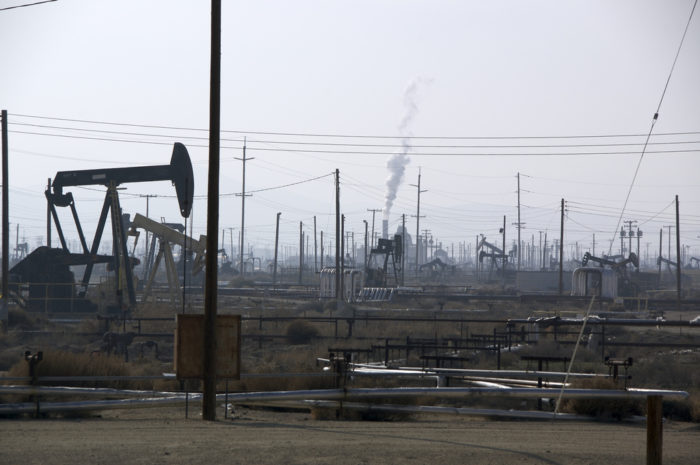
Image Credit: Ben Klocek / CC BY 2.0 / Flickr
A federal review says that the U.S. Environmental Protection Agency is failing to protect underground water supplies from oilfield wastewater contamination, The Associated Press reports.
A study undertaken by the U.S. Government Accountability Office looked at EPA operations around the country. Inspectors said that federal regulators are not taking necessary steps to enforce the Safe Drinking Water Act, and that oil companies were routinely allowed to pump wastewater into aquifers that potentially could be used as a source of drinking water.
EPA regulators were not collecting the paperwork or making on-site inspections to ensure enforcement, the AP said, not only in California but elsewhere. But California has been a special concern. It’s the third largest oil producing state in the country, and violations there included instances of dumping wastewater from drilling operations into at least 11 underground aquifers that should have been protected by federal law.
An AP report last year cited more than 2,000 permits that the state had given to oil companies to inject briny water and other liquid waste produced in oilfield operations into drinking water reserves. Underground injection is a common way of getting rid of the waste.
Kassie Siegel, senior counsel at the Center for Biological Diversity, an environmental group critical of state and federal regulators, told the AP, “The takeaway is that the EPA doesn’t collect and states don’t provide the information for the EPA to exercise the oversight that’s its job. It shows a massive failure to protect our drinking water.”
Not enough resources, says the EPA
In a summary of the report, the GAO said that the EPA hasn’t been collecting the information on inspections and enforcement it needs to do its job properly. “Without well-specific data on inspections, EPA cannot assess whether state and EPA-managed programs are meeting annual inspection goals.”
Inspectors also said that state and EPA-managed programs did not consistently gather enough information on how unresolved “significant violations” were being handled.
According to the AP report, EPA administrators said that they generally agreed with the review and would do a better job of data collection and oversight.
An EPA spokeswoman said that the resignation of the regional EPA administrator for the district that includes California, Jared Blumenfeld, wasn’t connected to the GAO review. (SFGate reports that Blumenfeld will spend the next four months hiking the Pacific Crest Trail.) And a spokeswoman for the state’s Department of Conservation said that California is “ahead in reforming its underground injection program compared to other states.”
EPA officials told inspectors that they didn’t have the resources to gather all the information they’d like on oilfield operations and underground aquifers, or to inspect regulatory operations in person, the GAO said. California is working to bring its oilfield regulations into compliance with federal drinking water laws, the AP said, but environmentalists complain that the effort is already behind schedule.
Concerns over wastewater drilling aren’t new
Trouble over wastewater disposal is a long-standing environmental issue in California.
Last year, the director of the state’s Department of Conservation, Mark Nechodom, was named in a federal lawsuit by a group of Kern County farmers and subsequently resigned. Farmers claimed that he, Gov. Jerry Brown, and the Division of Oil, Gas and Geothermal Resources had conspired with oil companies to allow the illegal injection of wastewater into federally protected aquifers.
The Conservation Department had failed to meet a deadline for making public information about the source, volume, and disposal of oilfield wastewater, The Los Angeles Times reported.
The agency said that a law passed by state lawmakers the year before had increased the amount of information it was required to collect, overwhelming the capacity of its data management system.
The problem has been exacerbated by the volume of oil extracted from California fields — 205 million barrels in 2014, according to the Department of Conservation. For every gallon of oil pumped out of the ground, as much as 19 gallons of water comes with it.
Weekly Newsletter
Get building science and energy efficiency advice, plus special offers, in your inbox.











0 Comments
Log in or create an account to post a comment.
Sign up Log in